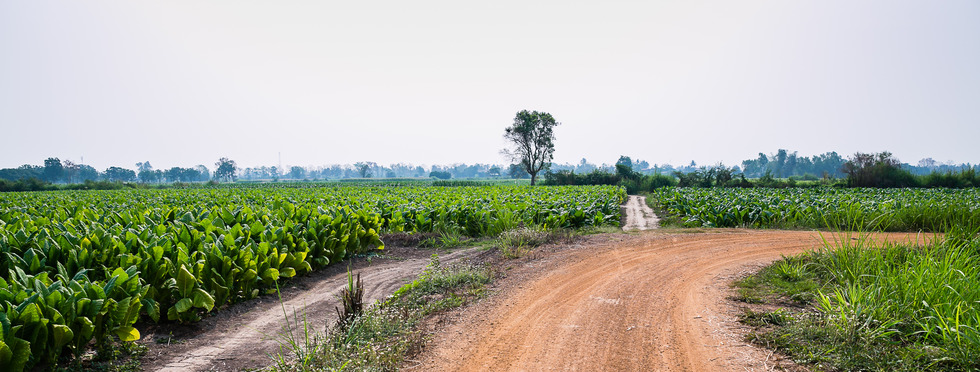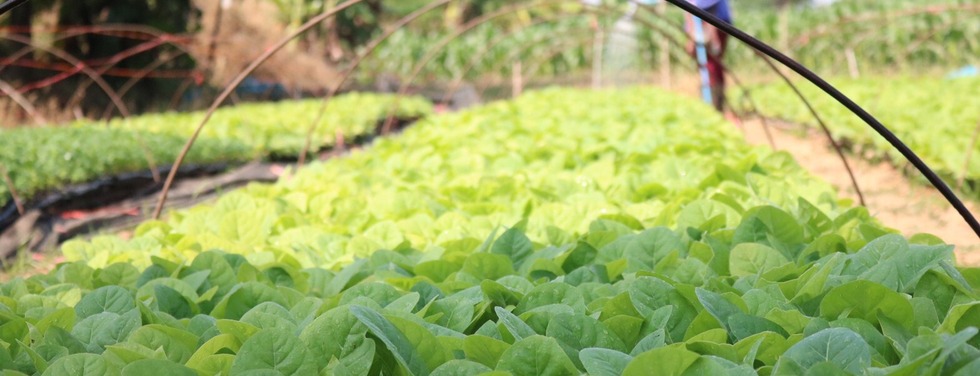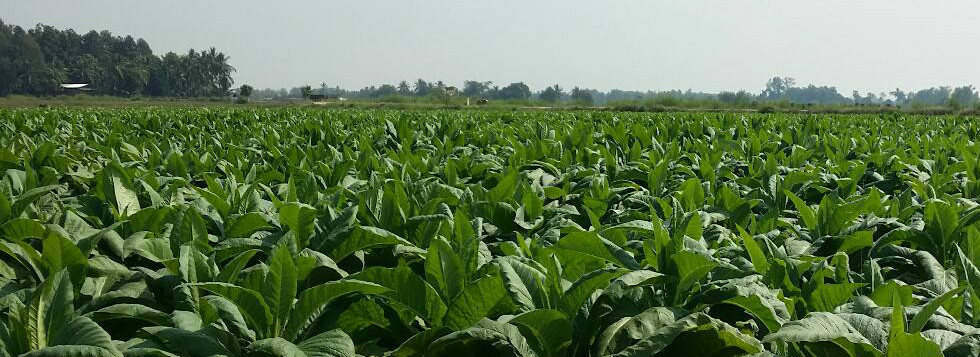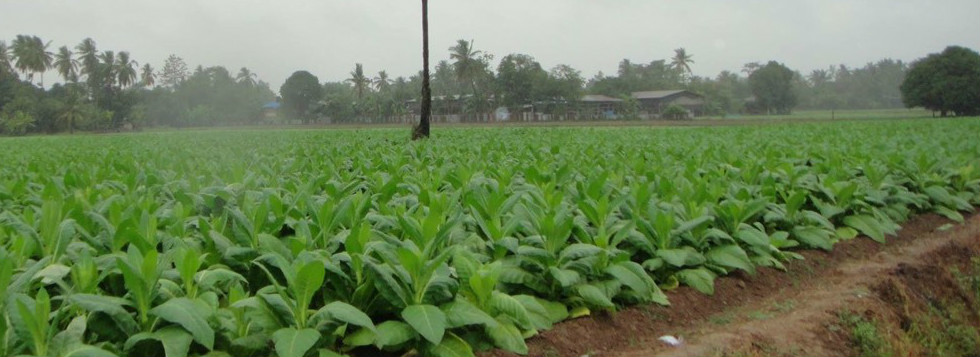



About Tobacco

Tabacco, the Scientific name is Nicotiana tabacum L. It is part of the nightshade family (Solanaceae) Tobacco was first discovered by the native peoples of north and South America and later introduced to Europe and the rest of the world. It became an important crop grown on the slave plantations in the 17th century. The southern states of America, such as Virginia, were the main areas growing tobacco, with small amounts grown on the Caribbean islands. The cultivation of tobacco usually takes place annually. The tobacco is germinated in seedbeds and then transplanted to the field until it matures. It is grown in warm climates with rich, well-drained soil. Thai tobacco growing areas start from upper Northern part throughout lower Northern part of Thailand as well as some parts in Northeastern area.
Types of tobacco

Divided by Curing methods. Cut plants or pulled leaves are immediately transferred to tobacco barns, where they will be cured. Curing methods vary with the type of tobacco grown, and tobacco barn design varies accordingly
Air-cured tobacco is hung in well-ventilated barns and allowed to dry over a period of four to eight weeks. Air-cured tobacco is low in sugar, which gives the tobacco smoke a light, sweet flavor, and a high nicotine content. Cigar and burley tobaccos are air cured. Contain other chemicals which are later added
Fire-cured tobacco is hung in large barns where fires of hardwoods are kept on continuous or intermittent low smoulder and takes between three days and ten weeks, depending on the process and the tobacco. Fire curing produces a tobacco low in sugar and high in nicotine. Pipe tobacco, chewing tobacco, and snuff are fire cured. Which other chemicals are later added
Flue-cured tobacco was originally strung onto tobacco sticks, which were hung from tier-poles in curing barns. These barns have flues which run from externally fed fire boxes, heat-curing the tobacco without exposing it to smoke, slowly raising the temperature over the course of the curing. In the 1960s conversion to gas fueled systems such as the Gastobac Burner System®[5] was common. The process will generally take about a week. This method produces cigarette tobacco that is high in sugar and has medium to high levels of nicotine.
Sun-cured tobacco dries uncovered in the sun. This method is used in Turkey Greece, Bulgaria, Macedonia, Romania and Mediterranean countries to produce oriental tobacco. Sun-cured tobacco is low in sugar and nicotine and is used in cigarettes. In India sun curing is used to produce so-called "white" snuffs, which are fine, dry, and unusually potent. The three most commonly grow tobacco types in Thailand are Virginia (or 'flue-cured') 68%, burley and Turkish (Oriental)
Flue-cured
(40% of world tobacco production)
Flue-cured is also known as "Bright" and "Virginia" by the world trade. It is used almost entirely in cigarette blends. Some of the heavier leaves may be used in mixtures for pipe smoking. Some English cigarettes are 100% flue-cured.
Flue-cured leaf is characterized by a high sugar: nitrogen ratio. This ratio is enhanced by the picking of the leaf in an advanced stage of ripeness, and by the unique curing process which allows certain chemical changes to occur in the leaf.
Cured leaves vary from lemon to orange to mahogany in color. The leaves are relatively large with the largest at midstalk. A well grown plant will be topped at a height of 39 to 51 inches with 18-22 harvestable leaves. Yields average around 2200 lbs/A with some in excess of 3000 lbs/A. The leaves are harvested as they mature from the ground up.
Flue-cured tobacco is grown in Chiangmai and Chiangrai
Burley
(11% of world production)
Burley is light air-cured type derived from the White Burley which arose as a mutant on a farm in Ohio in 1864. Burley is used primarily in cigarette blends. Some of the heavier leaf is sued in pipe blends and also for chewing.
Cured burley leaf is characterized by low sugar content and a very low sugar to nitrogen ratio (high nicotine). This is enhanced by high N. fertilizer, harvesting at an early stage of senescence, and the air curing process which allows oxidation of any sugars which may have occurred. Burley has a tremendous capacity to absorb flavorings (25% of its own weight vs. 7-8% for flue-cured).
Cured leaves vary in color from light tan to reddish and brown. The leaf should be without yellow patches or fringes.
Crops in the field are light green in color. This is particularly true for the midrib and stalk which are creamy- white. The leaves are slightly larger than flue-cured and the plants are generally taller. A typical plant is topped at 20-30 leaves. Average yields are 2500-3000 lbs/A and the plants are stalk cut. The leaves are stripped after curing.
Burley tobacco is grown in Petchabun and Sukhothai